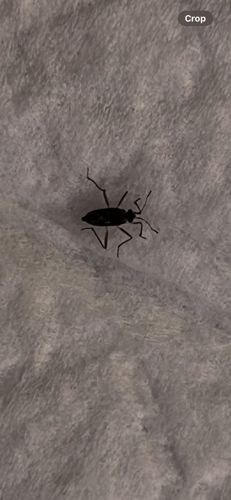Assassin Bug
Scientific Name: Reduviidae (general family name; specific species not identifiable from image alone)
Order & Family: Order: Hemiptera, Family: Reduviidae
Size: Varies significantly by species, generally ranging from 5 mm to 40 mm (0.2 to 1.6 inches) in length.

Natural Habitat
Widely diverse, found in various terrestrial habitats including gardens, agricultural fields, forests, grasslands, and even human dwellings. They can be found on plants, under rocks or leaf litter, or in crevices.
Diet & Feeding
Predatory; feeds on a wide range of insects and other small arthropods. Some species specialize in certain prey, while others are generalists. A few species are known to feed on vertebrate blood (e.g., kissing bugs).
Behavior Patterns
Typically found on plants, actively hunting for prey. Many species are nocturnal, but some are diurnal. They use their specialized mouthparts to pierce and suck fluids from their prey. Some species may feign death when disturbed.
Risks & Benefits
Most assassin bugs are beneficial to humans as biological control agents, preying on many agricultural pests. However, some species, particularly those in the subfamily Triatominae (known as kissing bugs), can transmit Chagas disease to humans through their bites and feces. Their bite can also be painful, similar to a bee sting, even if not medically significant.
Identified on: 8/18/2025